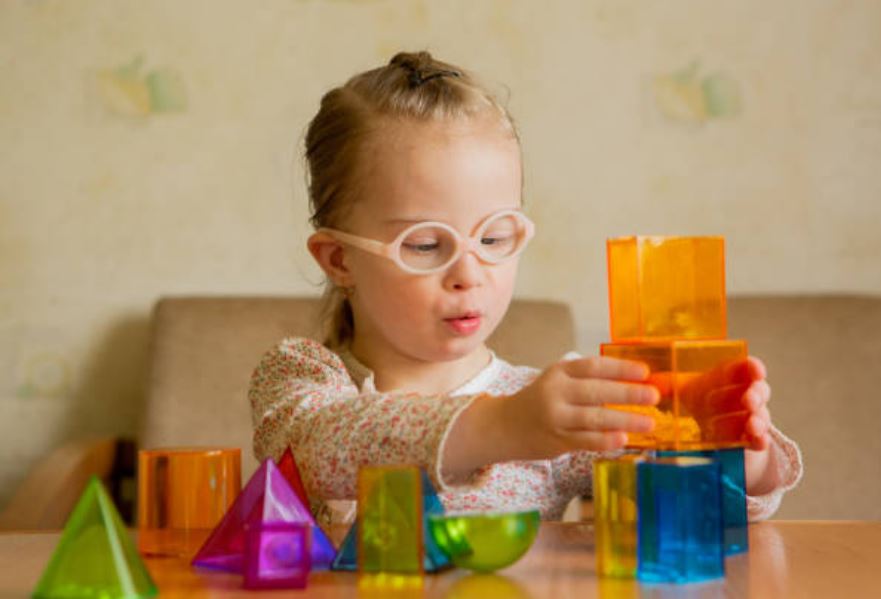Designing a Montessori-inspired playroom at home can be a rewarding experience for both parents and children. Montessori education focuses on fostering independence, creativity, and a love for learning through carefully prepared environments and child-centered activities. By implementing Montessori principles in your playroom, you can create a space that encourages your child to explore, discover, and develop essential skills. In this article, we will provide you with essential tips on setting up a Montessori-friendly playroom, organizing toys, and choosing age-appropriate materials. We will also highlight some fantastic products from Montessori Australia that align with these principles.

Setting Up Your Montessori Playroom
1. Choose the Right Space
The first step in creating a Montessori playroom is selecting a suitable space in your home. Ideally, this should be a quiet and easily accessible room where your child can play and learn without distractions. Natural light is a bonus, as it creates a warm and inviting atmosphere.
2. Keep it Simple and Uncluttered
Montessori environments are known for their simplicity and order. A clutter-free space allows children to focus on their activities and promotes a sense of calm. Use open shelving units at your child’s eye level to store toys and materials, making them easily accessible.
3. Create Defined Areas
Divide the playroom into different areas for specific activities. For example, you can have a reading corner with a comfortable chair and a bookshelf, a creative area with art supplies, and a space for practical life activities such as cooking or cleaning. This helps children understand the purpose of each area and encourages them to engage in a variety of activities.
4. Use Child-Sized Furniture
Child-sized furniture is a key element of a Montessori playroom. It allows children to move freely and independently. Look for tables, chairs, and shelves that are proportionate to your child’s size. Montessori Australia offers a range of child-sized furniture designed to meet these needs.
5. Incorporate Natural Materials
Montessori education emphasizes the use of natural materials such as wood, metal, and fabric. These materials are not only aesthetically pleasing but also provide a sensory experience for children. Avoid plastic toys and opt for wooden blocks, puzzles, and other natural materials whenever possible.

Organizing Toys and Materials
1. Rotate Toys Regularly
To maintain your child's interest and prevent overwhelming them, rotate toys and materials regularly. Keep a small selection of toys on display and store the rest in a separate area. Rotate the toys every few weeks to keep the playroom fresh and exciting.
2. Use Clear and Simple Labels
Labeling shelves and bins with pictures or words helps children learn to organize their toys independently. It also reinforces literacy skills. Montessori Australia offers a variety of storage solutions that come with clear and simple labels.
3. Promote Independence
Organize the playroom in a way that promotes independence. For example, place art supplies within easy reach and provide child-sized cleaning tools so your child can tidy up after themselves. This encourages responsibility and self-sufficiency.
4. Focus on Quality Over Quantity
Montessori principles emphasize quality over quantity when it comes to toys and materials. Choose high-quality, durable items that will stand the test of time. Montessori Australia offers a wide range of carefully curated toys and materials that are designed to engage and educate children.

Choosing Age-Appropriate Materials
Infants (0-12 Months)
For infants, focus on sensory experiences and motor skill development. Soft, colorful toys that are easy to grasp and explore are ideal. Montessori Australia offers a range of sensory toys such as soft rattles, crinkle toys, and wooden grasping toys.
Toddlers (1-3 Years)
Toddlers are developing their fine motor skills and beginning to understand cause and effect. Choose toys that encourage problem-solving and creativity, such as stacking blocks, shape sorters, and simple puzzles. Montessori Australia’s toddler range includes beautifully crafted wooden toys that are perfect for this age group.
Preschoolers (3-6 Years)
Preschoolers are ready for more complex activities that promote cognitive development and creativity. Montessori materials such as practical life tools, sensory bins, and educational games are ideal. Montessori Australia offers a variety of Montessori-approved materials that cater to this age group, including practical life kits and sensory exploration sets.
School-Age Children (6+ Years)
Older children benefit from activities that challenge their thinking and encourage independent learning. Look for educational toys, science kits, and art supplies that allow for open-ended exploration. Montessori Australia’s range of materials for school-age children includes science experiment kits, advanced puzzles, and art supplies.

Product Recommendations from Montessori Australia
1. Wooden Baby Gym
Montessori Australia’s Wooden Baby Gym is perfect for infants. It features hanging toys that encourage reaching and grasping, promoting motor skill development and hand-eye coordination.
2. Toddler Practical Life Kit
This kit includes child-sized cleaning tools, such as a broom, dustpan, and spray bottle. It’s designed to help toddlers learn practical life skills while promoting independence and responsibility.
3. Sensory Exploration Set
This set includes a variety of sensory materials, such as textured balls, sensory bottles, and a sensory bin. It’s perfect for preschoolers who are exploring different textures and developing their fine motor skills.
4. Science Experiment Kit
For school-age children, Montessori Australia’s Science Experiment Kit offers a range of hands-on activities that encourage scientific thinking and exploration. It includes everything needed for a variety of experiments, from volcano eruptions to simple chemistry experiments.
5. Art Supplies Set
Encourage creativity with Montessori Australia’s Art Supplies Set. This set includes high-quality art materials such as watercolors, colored pencils, and drawing paper, perfect for children of all ages.

Creating a Montessori-inspired playroom at home is a wonderful way to support your child’s development and foster a love for learning. By following the tips outlined in this article, you can create a space that encourages independence, creativity, and exploration. Remember to choose high-quality, age-appropriate materials that align with Montessori principles, and consider incorporating products from Montessori Australia to ensure your playroom is both functional and beautiful.
For more information and to explore a wide range of Montessori products, visit Montessori Australia.

